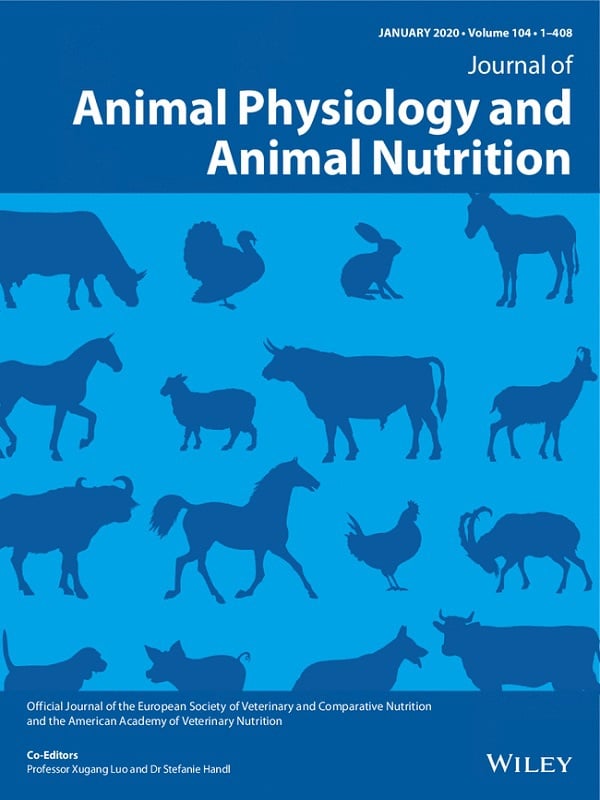Post‐ruminal non‐protein nitrogen supplementation as a strategy to improve fibre digestion and N efficiency in the ruminant
Journal of Animal Physiology and Animal Nutrition 2019, 104:1, p: 64-75

Abstract
The ruminant is able to transform plant fibres and non‐protein nitrogen (NPN) into edible foods for human consumption. In an effort towards improving our understanding of this process, we sought to challenge convention and examine how the source, amount and site of NPN delivery in the gastrointestinal tract of the ruminant may affect fibre digestibility, rumen stability and N metabolism. In the first study presented here, we used four ruminally cannulated non‐lactating heifers in a Latin square design to infuse 59 g/days of N in the form of ammonia (A) or urea (U) into either the rumen (R) or the abomasum (A). We found that intake was higher (p = .03) for animals receiving supplementary NPN as urea compared with ammonia. In addition, abomasally infused urea (UA) improved fibre fermentation by 9.4% (p = .05) and decreased ruminal pH fluctuations (lower slope in the cumulative pH parameters, p = .04) when compared with the same amount of urea infused ruminally (UR). In a second study, using the same group of heifers, we infused 50 or 150 g/day of urea into the rumen (UR50 and UR150) or 150 g of urea in the abomasum (UA150) or 50 g in the rumen and 100 g in the abomasum (URA150). Fibre digestion was improved by 4% (p = .02) when the same dose of urea was infused into the abomasum compared with the rumen, while estimated microbial protein production and N efficiency were not different between a low rumen dose and high post‐ruminal dose of urea. Collectively, these studies provide insight into the viability of post‐ruminal NPN supplementation as a strategy to improve fibre digestion and NPN inclusion in the ruminant diet.